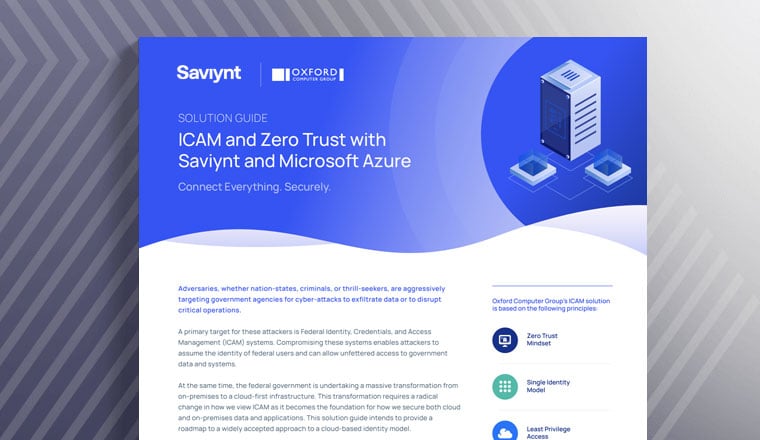What is Zero Trust Network Access (ZTNA)?
What is Zero Trust Network Access (ZTNA)?
Zero Trust Network Access (ZTNA) is a security approach that is designed to protect networked resources from unauthorized access. It is based on the idea that all devices and users, whether inside or outside the organization’s network, should be treated as untrusted until proven otherwise.
In a Zero Trust environment, access to resources is granted based on the principle of “never trust, always verify.” This means that every request for access is treated as potentially malicious and subjected to strict authentication and authorization checks. ZTNA typically involves the use of multi-factor authentication, access controls, and other security measures to ensure that only authorized users and devices can access sensitive resources.
ZTNA is increasingly being used as an alternative to traditional network security models, which often rely on perimeter-based defenses such as firewalls. This is because these models are no longer sufficient to protect against modern cyber threats, which can bypass perimeter defenses and gain access to networks and resources. By adopting a Zero Trust approach, organizations can more effectively protect their networks and resources from unauthorized access and ensure the security and integrity of their systems.
Zero Trust Network Access (ZTNA) solutions provide secure network access to an organization’s applications, data, and services on an identity and context basis. This access is provided via a secure encrypted tunnel similar to a VPN. The ZTNA verifies the user’s identity and enforces a “never trust, always verify” least privilege approach, ensuring they only have access to the applications and data they need for their particular role and context of use.
Unlike VPNs, ZTNAs only grant access to the relevant part of the network, rather than allowing for broad network access. They create a “dark cloud,” similar to a software-defined perimeter (SDP). Because users only have visibility into a piece of the network and applications are hidden from public view an organization can significantly reduce their attack surface by employing a ZTNA.
Why is Zero Trust Network Access (ZTNA) important?
ZTNA is far better suited to today’s dynamic digital business environments than legacy perimeter-based approaches to security. Because critical assets no longer reside completely on-prem — or within secure internal networks — it’s now crucial that a ZTNA solution sets the access boundary based on the identity and what that identity is allowed to access. Then it only allows network access to those assets. Here are some key security benefits that ZTNA provides:
1. Gain Greater Visibility Across the Enterprise
Because ZTNA never assumes anyone or anything is trusted, you decide what resources and activities you’ll need to cover in your security strategy. Ideally, all data and computing sources are protected.
2. Simplify IT Management
Because ZTNA rests on the foundation of continual monitoring and analytics, you can use this intelligence to evaluate access requests. Access is automatically granted if the privileged access management (PAM) system judges the request to be standard, or low risk, based on key identifiers. IT doesn’t need to be involved in approving every access request — they serve in an admin capacity only when the automated system flags requests as suspicious.
3. Gain Insights and Work Smarter
ZTNA also enables your security team to work smarter. Because it utilizes centralized monitoring, you can easily generate reliable data stored in a single location. This facilitates robust analytics and intelligence, which you can leverage to gain additional insight. Those insights allow your security team to avoid the noise of too much manual data so they may focus on the truly important data that the solution generates. As a result, your team can gain insights they wouldn’t have been able to otherwise, fostering a more secure environment.
4. Improve Data Protection
ZTNA delivers better data protection. A Zero Standing Privilege framework combined with just-in-time (JIT) access prevents rogue employees or malware from gaining access to large portions of your network by eliminating or reducing standing access.
5. Secure Your Remote Workforce
Firewalls are no longer sufficient now that users are spread across the world, and data is spread across many different locations. With ZTNA, identity becomes the primary basis by which access is evaluated and granted. users, devices, and applications seeking access all have an identity context, so adopting a Zero Trust approach offers strong protection for workers and data in any location.
With identity as the perimeter, founded on time-limited access and just enough access, Zero Trust network access enables remote security.. People cannot access data or resources they shouldn’t after moving to a different department — or organization. Additionally, identity allows us to assume that even employees, resources, and infrastructure inside the organization could be compromised.
6. Streamline User Access
Organizations that are beginning to centralize visibility, identity management, and policy enforcement will be prepared to employ ZTNA, particularly as they become able to enforce least-privilege access automatically. Automation that accompanies a Zero Trust framework enables users to access what they need quickly, so they don’t have to wait on administrators for approval.
7. Continuous Compliance
ZTNA helps to ensure continuous compliance by evaluating and logging every access request’s time, location, and application. This contiguous chain of evidence for all access requests leaves a seamless audit trail, making upholding governance faster and more efficient
How to Implement a Zero Trust Network Access (ZTNA) System
ZTNA can either be activated by an endpoint-connected device that communicates with a controller that authenticates and connects the user to the appropriate application; or, in the case of service-based ZTNA a provider manages the authentication via a connector that guards the applications. A primary advantage of leveraging a service provider is you don’t need to have a ZTNA controller installed directly on the devices of end-users.
There are two primary methods for employing Zero Trust Network Access:
- In-house or On-prem ZTNA requires that an organization manage the deployment, implementation, management, and maintenance of the ZTNA system.
- Cloud-based ZTNA is deployed via a service provider that manages the deployment, implementation, management, and maintenance of the ZTNA system. These systems also tend to be faster as they can optimize the traffic flow for low latency.
Saviynt & Zero Trust Network Access (ZTNA)
Saviynt cloud Identity & Access Governance strengthens your Zero Trust strategy. Our Zero Trust toolkit includes identity governance and administration, privileged access management, application access governance, third-party access governance, and data access governance products.
Ready to make Zero Trust the foundation of your security?

Resources


